UPDATE: The new LG Velvet smartphone has taken the top spot on our list of the best mid-range phones in Australia. Find out more about this beautiful handset on Page 2.
Premium phones have advanced at an accelerated pace over the last couple of years, with many flagship handsets adopting the kinds of features that wouldn't seem out of place in a science fiction novel.
Wireless power sharing, in-display fingerprint scanners, encrypted Face-ID functionality, higher-end OLED displays, advanced multi-camera setups (some with as many as six sensors) and 5G network capability are all undoubtedly impressive features, but they've also helped to raise the cost of premium smartphones dramatically.
Apple's iPhone 11 Pro Max is a powerhouse device and one of the best phones you can buy in 2020, but a top-end model will set you back AU$2,499. For many, phones in this price range will be prohibitively expensive.
Thankfully, the rising cost of premium handsets has led to the creation of a category that can now be considered the new 'mid-range'. Even well-known manufacturers like Apple, Samsung and Google have started to offer terrific phones that boast a number of flagship-level features at a much more reasonable price point.
We've taken the liberty of rounding up some terrific handsets that fit within the new mid-range category, which we'd consider to be anywhere between AU$600 and AU$1,050. Here are the best mid-range phones in Australia for 2020.
- Best phones in Australia 2020
- Best cheap smartphones in Australia for 2020
- Best Android phones in Australia for 2020
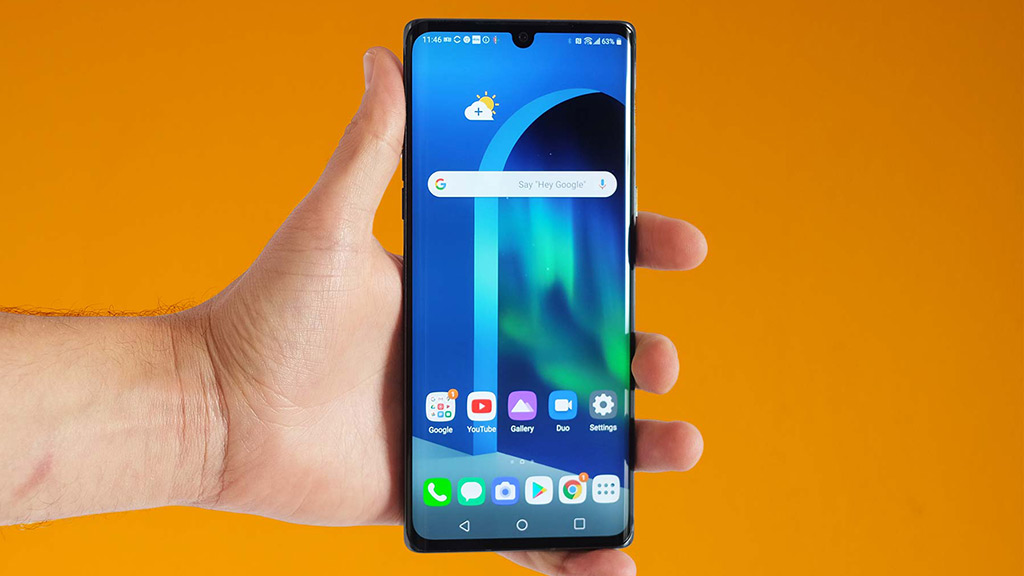
1. LG Velvet
Premium styling at a mid-range price point
Weight: 180g | Dimensions: 167.2 x 74.1 x 7.9mm | CPU: Snapdragon 765G | RAM: 6GB | Storage: 128GB | Battery: 4,300mAh | Rear camera: 48MP + 8MP + 5MP | Front camera: 16MP
Easily the classiest phone in its price range, the LG Velvet offers impeccable styling that rivals that of the top flagship phones of the year – and at the very reasonable RRP of AU$899.
Boasting similar specs to the excellent Motorola Edge (despite being AU$100 cheaper), LG Velvet acts as a turning point for the South Korean electronics giant, in that it is abandoning its established G and V series smartphones in favour handset lines that are directly aimed as specific kinds of consumers.
So who is the LG Velvet for? One look at its beautiful design and it's clear that LG Velvet is aimed squarely at the fashion-minded individual. Consider yourself a bit of a style-guru or influencer? This phone's for you.
Witness, for instance, the phone's gorgeous rear camera setup, which pushes back on the current smartphone trend of enormous camera bumps in favour of a tasteful ‘raindrop’ triple camera array.
Unlike the Motorola Edge, which is has a plastic back, both the LG Velvet's front and rear are adorned with curved glass, which means it feels incredibly comfortable in the hand. Its FHD+ OLED display also delivers fantastically bright and vibrant colours, along with deep, inky blacks.
Thankfully, it has specs to back up its ravishing looks, sporting the same Snapdragon 765G processor that powers the aforementioned Motorola Edge. That means you'll get terrifically snappy performance along with the ability to connect to 5G networks.
In terms of its photographic capability, LG Velvet offers very impressive snapshots with its 48MP primary sensor (particularly in low light situations), though admittedly it's ultra-wide photos leave something to be desired, with most shots lacking detail and looking smoothed out.
That said, its selfie camera is excellent, offering a wide range of portrait effects and adorable Snapchat-style filters for your face.
One thing the LG Velvet does lack is the excellent Quad DAC audio feature that's been present in every LG handset since the G4. Luckily, it's been replaced by a new mode called LG 3D Sound Engine, which offers more or less the same effect as Quad DAC, in that music sounds louder, fuller and more immersive.
If you're in the market for an incredibly stylish phone with impressive specs and features to match, the LG Velvet just might be the smooth operator you've been looking for.
Read our LG Velvet review
See the best LG Velvet outright prices
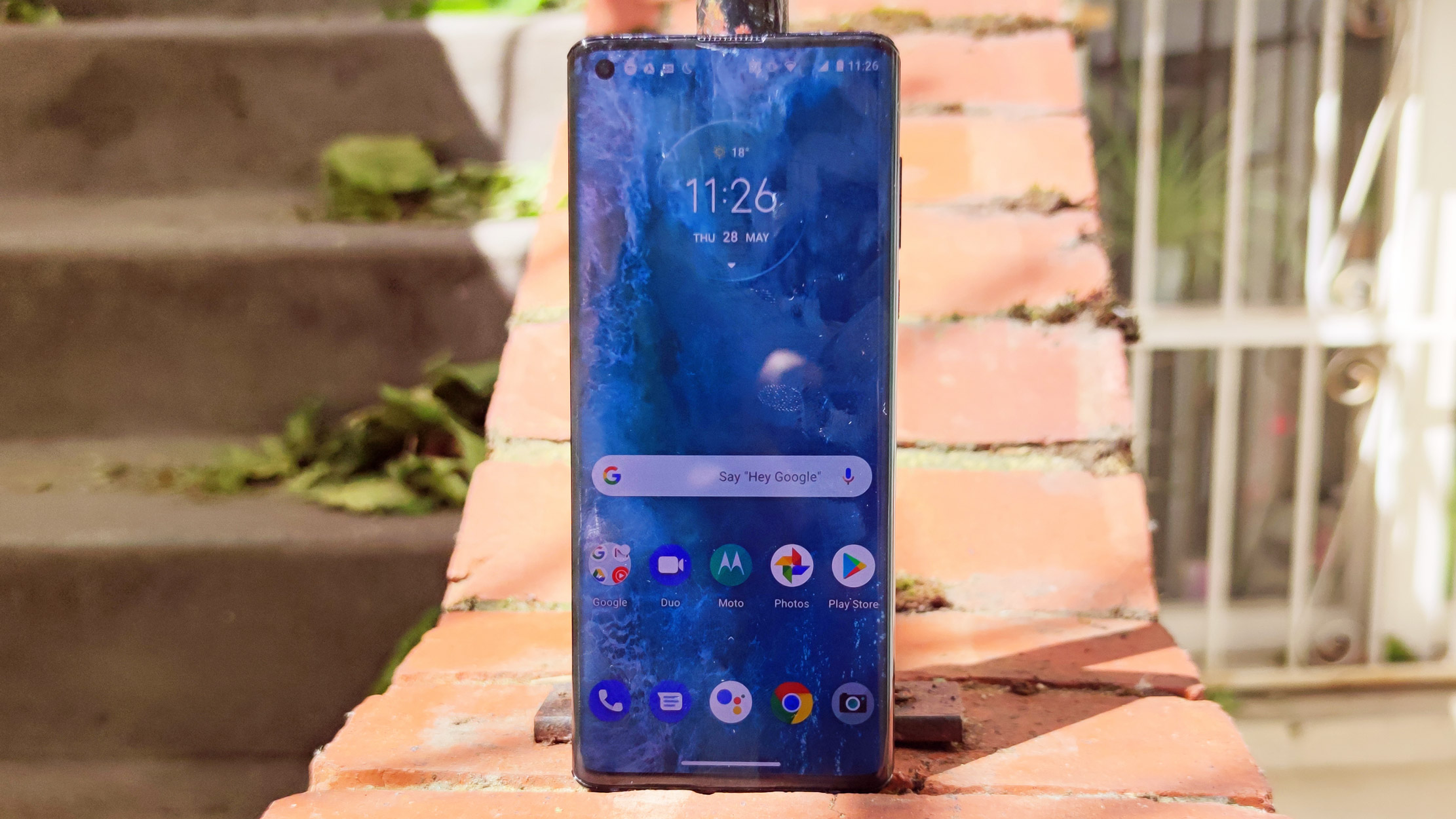
2. Motorola Edge
One of Motorola's best smartphones in years
Weight: 188g | Dimensions: 161.6 x 71.1 x 9.3mm | CPU: Snapdragon 765G | RAM: 6GB | Storage: 128GB | Battery: 4,500mAh | Rear camera: 64MP + 16MP + 8MP + ToF | Front camera: 25MP
Following the disappointment of its much-hyped foldable Razr, it's great to see Motorola bounce back with the new Motorola Edge – one of the company's best smartphones in years.
Sporting a sleek design that feels great in the hand, the Motorola Edge could be mistaken for a premium flagship handset upon first sight – a feeling that's only betrayed by the phone's plastic backing.
Its smooth 90Hz OLED display is bright and vibrant, though its edges might be a little too curved for most – you'll find the steepness of the curve actually makes both sides of the screen look dark.
Nevertheless, you'll find the Motorola Edge to be snappy and responsive, with its Snapdragon 765 chipset offering impressive performance from both a gaming and UI navigation standpoint.
In terms of battery life, the Motorola Edge also excels, with a large 4,500mAh capacity that will last well into the next day of usage. That said, it's a shame the phone does not offer reverse wireless charging functionality like many others in its price range.
Camera-wise, the Motorola Edge offers a good, if unspectacular quad-lens array that's capable of decent photos across the board, particularly from its primary 64MP shooter.
However, we've found that the Motorola Edge's camera app to be a little sluggish off the mark, sometimes taking half a second to snap a picture after pressing the capture button. This can lead to some missed moments, which is somewhat frustrating.
if you're looking for a smartphone with loud and punchy speakers, the Motorola Edge just might take the crown. Its onboard stereo speakers have been professionally tuned by Waves, the Grammy award-winning audio company responsible for the creation of software-based audio plugins.
The result is a smartphone that booms like a mini Bluetooth speaker, easily outpacing its smartphone competition when it comes to audio output.
Curiously, the phone does not offer an official IP rating, meaning you should avoid dropping the phone in water at all costs. Despite this, Motorola representatives have assured us that the phone should be relatively safe from splashes or "whoopsie moments".
Although it has a couple of drawbacks, the Motorola Edge does many things right, offering a great looking and feeling handset that performs well and manages to slide under the AU$1,000 price barrier, making it a fantastic upper mid-range option.
Read our Motorola Edge review
See the best Motorola Edge outright prices
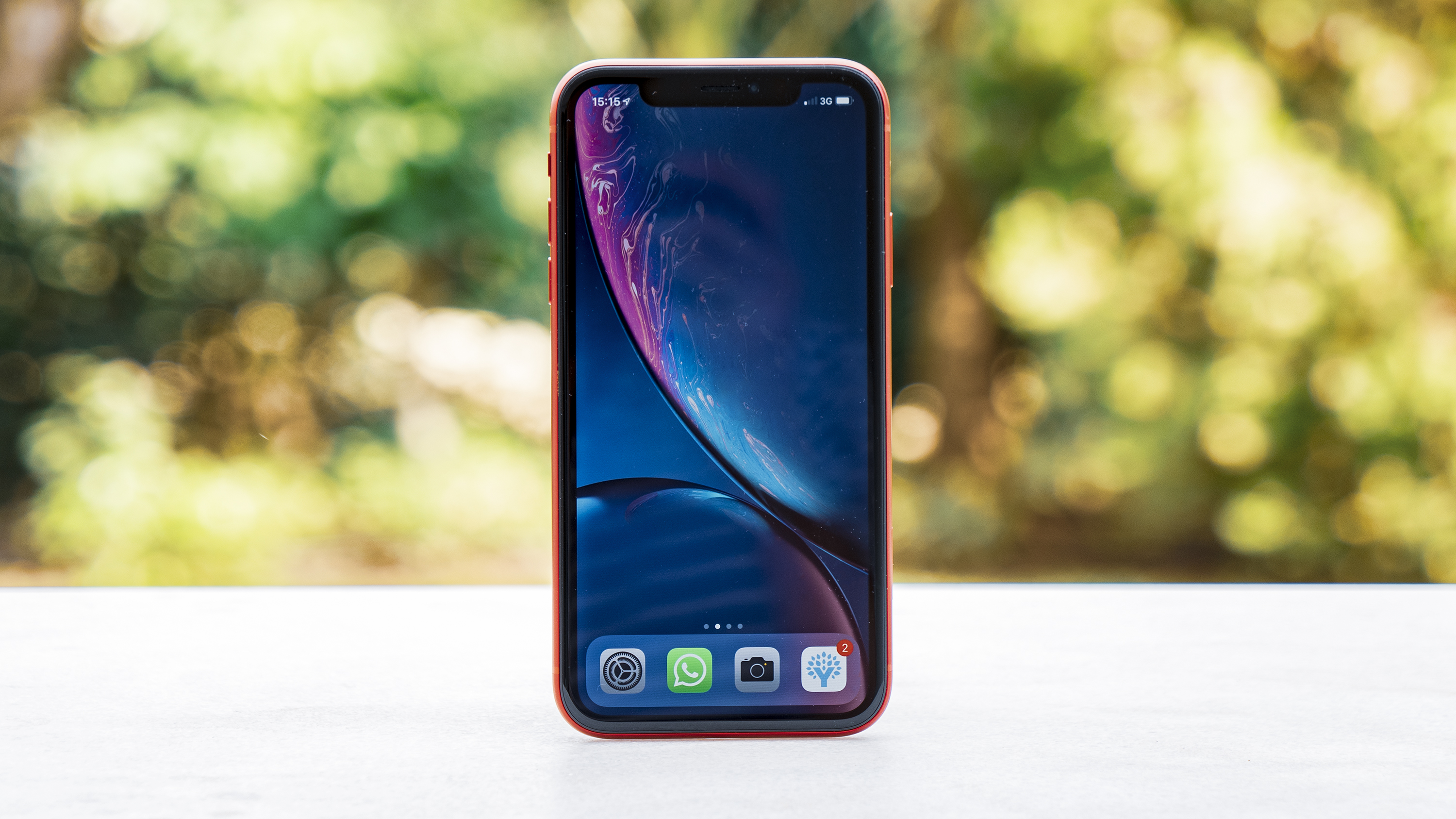
3. Apple iPhone XR
The full iPhone experience without the exorbitant cost
Weight: 194g | Dimensions: 150.9 x 75.7 x 8.3mm | CPU: Apple A12 Bionic | RAM: 3GB | Storage: 64GB/128GB/256GB | Battery: 2,942mAh | Rear camera: 12MP | Front camera: 7MP + ToF
For many Apple fans, the rising cost of the Cupertino company's premium iPhones has made it harder to justify upgrading on a regular basis. But what if there was a cheaper iPhone option that offered the same updated chipset as its more expensive siblings while dialling back on other extravagances?
Enter the iPhone XR – a more affordable Apple smartphone that's gotten even cheaper since the announcement of its successor, the iPhone 11. Sure, there are better models available now, but the iPhone XR still packs the same A12 Bionic chip that powers the exceptional iPhone XS and XS Max, which is pretty darn impressive for just over a thousand bucks.
Of course, there are a couple of downsides. For one, iPhone XR only sports a single camera on its rear, which is rare in this day and age. Thankfully, it still takes great photos and can even pull off impressive blurred backgrounds in Portrait mode.
Additionally, the iPhone XR sports a fairly low-res LCD display, rather than the beautiful OLED screen thats adorn higher-end iPhone models. It's still quite bright, and Apple's unmistakable notch design at least makes the display look quite modern when glanced at.
Still, if you can overlook those issues, the iPhone XR is a terrific option for those who want to remain in Apple's eco-system without spending an absolute fortune on top-end models.
Read our iPhone XR review
See the best iPhone XR outright deals here
See the best iPhone XR telco plans here
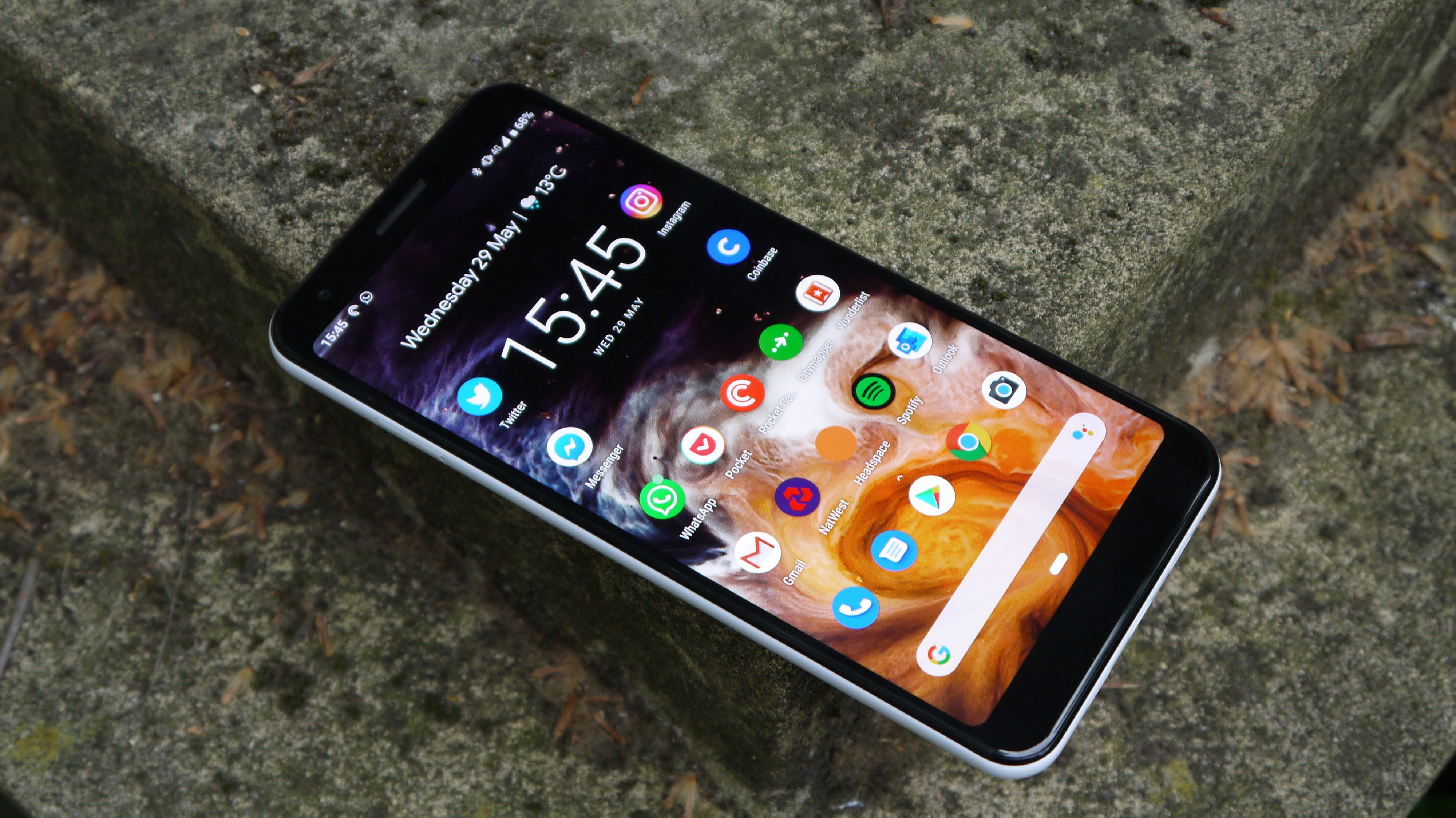
4. Google Pixel 3a XL
A real winner in the mid-range phone market
Weight: 167g | Dimensions: 160.1 x 76.1 x 8.2mm | OS: Android 9.0 (update to Android 10) | Screen size: 6-inch | Resolution: 1080 x 2160 | CPU: Snapdragon 670 | RAM: 4GB | Storage: 64GB | Battery: 3,700mAh | Rear camera: 12.2MP | Front camera: 8MP
Google's Pixel 3 range is known for boasting fantastic cameras, and thankfully, that photographic prowess carries over to the much cheaper Pixel 3a XL. In terms of design, it even improves on the premium Pixel 3 XL in a couple of (albeit minor) ways.
For starters, the Pixel 3a XL lacks the enormous notch that's present on its flagship siblings. Instead, It's got a standard bezel along the top of the display that we think looks more elegant.
Speaking of the Pixel 3a XL's display, we were pleased to find that Google went for a beautiful Full HD+ OLED screen on the device, and while that is a lower resolution that the Quad HD+ sporting flagship models, the difference in quality is barely noticeable unless you're really looking for it.
You'll also find that unlike the Pixel 3 and 3XL, the 3a XL actually sports a 3.5mm headphone jack – a feature that's a real crowdpleaser but which doesn't get a lot of love from smartphone manufacturers these days.
Of course, Google did have to make some concessions in regards to the Google 3a XL's chipset, implementing a Snapdragon 670 processor in order to keep costs down. Thankfully, the handset still feels fast and responsive, which probably has a lot to do with the bloat-free stock version of Android 9 Pie that's installed on it out of the box.
Read our Google Pixel 3a XL review
See the best Google Pixel 3a XL outright deals here
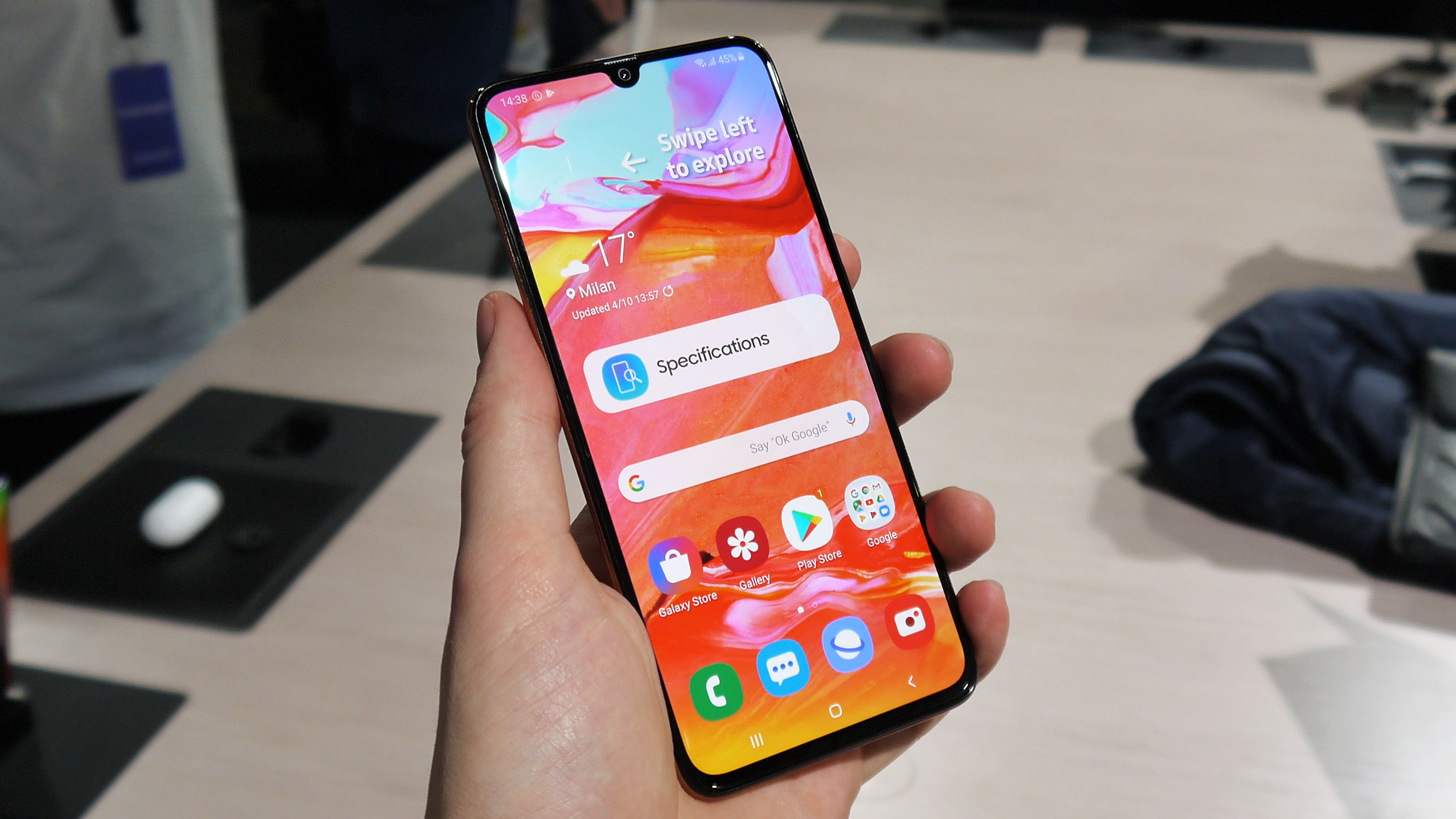
5. Samsung Galaxy A70
Great design and awesome battery life
Weight: 183g | Dimensions: 164.3 x 76.7 x 7.9mm | OS: Android 9 | Screen size: 6.7-inch | Resolution: 1080 x 2270 | CPU: Octa-core Snapdragon 675 | RAM: 6GB | Storage: 128GB | Battery: 4,500mAh | Rear camera: 32MP + 8MP + 5MP | Front camera: 32MP
With its beautful 6.7-inch Super AMOLED display and minimal teardrop notch, it would be easy to mistake the Samsung Galaxy A70 for a top-end phone at first glance. And, when you factor in flagship features like an in-display fingerprint scanner and a robust rear-mounted triple camera setup with ultra-wide lens, the distinction between mid-range and premium becomes even harder to detect.
Of course, its mid-range status does become more apparent as soon as you pick up the phone, if only because its plastic body feels lighter than its size would suggest.
Internally, it's got a Snapdragon 675 chipset running things, along with 8GB of RAM (double that of the Pixel 3a XL), granting it significantly more horsepower than Google's mid-ranger. It's also got an enormous 4,500mAh battery, which should last you well into the next day.
When it comes to the Galaxy A70's photographic capabilities, the device can be a bit of a mixed bag. The phone's triple-camera layout can be responsible for some terrific photos, particularly from its 32MP primary sensor.
That said, its ultra-wide sensor sports half the megapixels of the one featured in the flagship Galaxy S10, and the difference in quality is immediately apparent when looked at side-by-side.
But really, what can you expect from a smartphone that's roughly half the price of its premium cousin? The fact that it has an ultra-wide sensor at all is something to be celebrated, particularly at such an affordable price range.
On the flip side, Samsung has delivered a show-stopping 32MP front-facing camera, which may well be the feature that seals the deal for selfie-loving users.
Read our Samsung Galaxy A70 hands on review
See the best Samsung Galaxy A70 outright deals here
See the best Samsung Galaxy A70 plans here
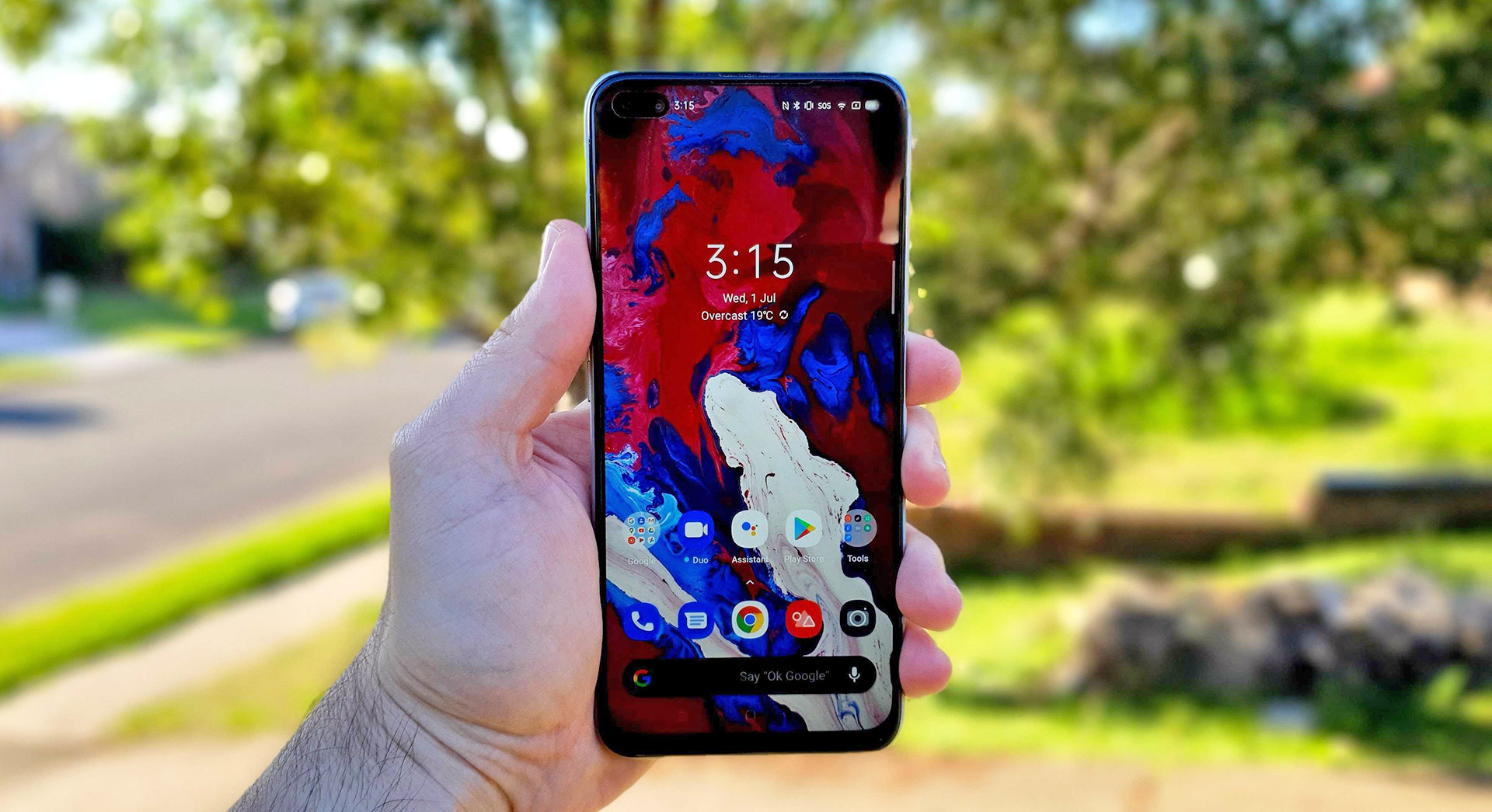
6. Realme X3 SuperZoom
The best Realme phone available in Australia
Weight: 202g | Dimensions: 163.8 x 75.8 x 8.9mm | OS: Android 10 | Screen size: 6.6-inch | Resolution: 1080 x 2400 | CPU: Snapdragon 855+ (7 nm) | RAM: 8GB/12GB | Storage: 128GB/256GB | Battery: 4,200mAh | Rear camera: 64MP + 8MP + 8MP + 2MP | Front camera: 32MP
Despite the Realme X3 SuperZoom's mid-range price point, the manufacturer's latest smartphone on the Australian market boasts specs that would be perfectly at home on a premium flagship handset.
We're talking a Snapdragon 855+ chipset (the same featured in US models of Samsung's Galaxy S10 range and in Google's Pixel 4 lineup), up to an astonishing 12GB of RAM, onboard storage up to 256GB, a quad camera with a 64MP primary sensor... all for the max price of AU$799. Feel free to take a moment to let that information sink in.
Additionally, you have a 1080p LCD display with a 120Hz refresh rate – a feature that's only now becoming commonplace amongst flagship smartphones. This allows for silky smooth scrolling and gameplay, and unlike some other handsets on the market, the X3 SuperZoom can automatically switch between 60Hz and 120Hz where appropriate in order to conserve battery.
Speaking of battery life, the Realme X3 SuperZoom has a lot of it, with a 4,200mAh capacity that will last you well into the next day – even with the 120Hz mode on at all times.
In terms of its camera, the Realme X3 SuperZoom offers quite a bit of variety, with the aforementioned 64MP primary sensor being the clear standout. As the handset's name would suggest, the SuperZoom has a periscope telephoto lens that's capable of 5x optical zoom without distortion, and 60x hybrid zoom that makes Monet's Water Lillies look Ultra HD by comparison. Oh well, at this price point it's the thought that counts.
As for its remaining sensors, the X3 also offers an 8MP ultra-wide camera, which admittedly struggles a little when it comes to capturing fine detail, and a 2MP macro lens that's surprisingly good for up-close photography.
Performance-wise, the Realme X3 SuperZoom is an absolutely winner. Running Android 10 out of the box, the device feels consistently fast and responsive during navigation and gameplay. If you're after a powerful device with a good camera and a smooth gaming-focused display, you're unlikely to find better value for money than Realme's X3 SuperZoom.
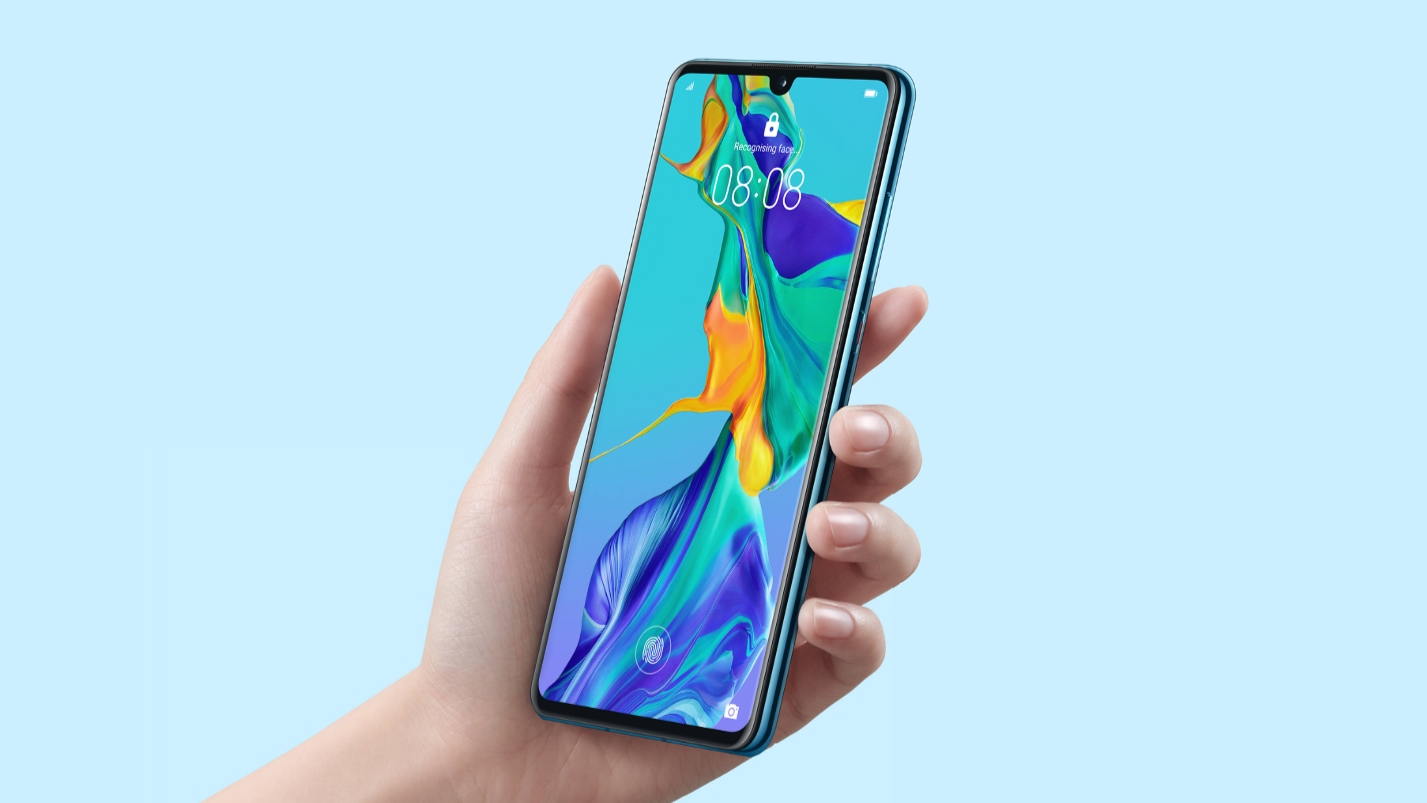
7. Huawei P30
An honest-to-goodness flagship at a mid-range price
Weight: 165g | Dimensions: 149.1 x 71.4 x 7.6mm | OS: Android 9.0 | Screen size: 6.1-inch | Resolution: 1080 x 2340 | CPU: Kirin 980 | RAM: 6GB | Storage: 128GB | Battery: 3,650mAh | Rear camera: 40MP + 16MP + 8MP | Front camera: 32MP
Even taking Huawei's recent troubles with US trade bans into account, the P30 is still an absolutely fantastic phone and may very well be the last smartphone the Chinese phone maker releases with access to Googles apps and services... for some time at least.
Still considered a flagship phone, the Huawei P30's price has come down to the point where it now sits alongside the other upper mid-range devices on this list, making it a real steal for those who don't mind the possibility of being limited to Android 9 for the remainder of the phone's lifetime (an Android 10 update was rumoured in September, but it's release is as yet unconfirmed).
It's rear snapper is a Leica-powered triple camera 40MP (main) + 16MP (ultra-wide) + 8MP (telephoto) setup which is capable of absolutely breathtaking photography. We're also big fans of the phone's 3.5mm headphone jack (a rarity in this day and age) and in-display fingerprint scanner.
Additionally, the device boasts a gorgeous 6.1-inch 1080p OLED display and sizeable 3,650mAh battery, which should get you through a day and a half of usage with no problems. If you can overlook Huawei's current troubles, the P30 is more than up to the task of carrying out your daily needs.
Read our Huawei P30 review
See the best Huawei P30 outright deals here
See the best Huawei P30 plans here
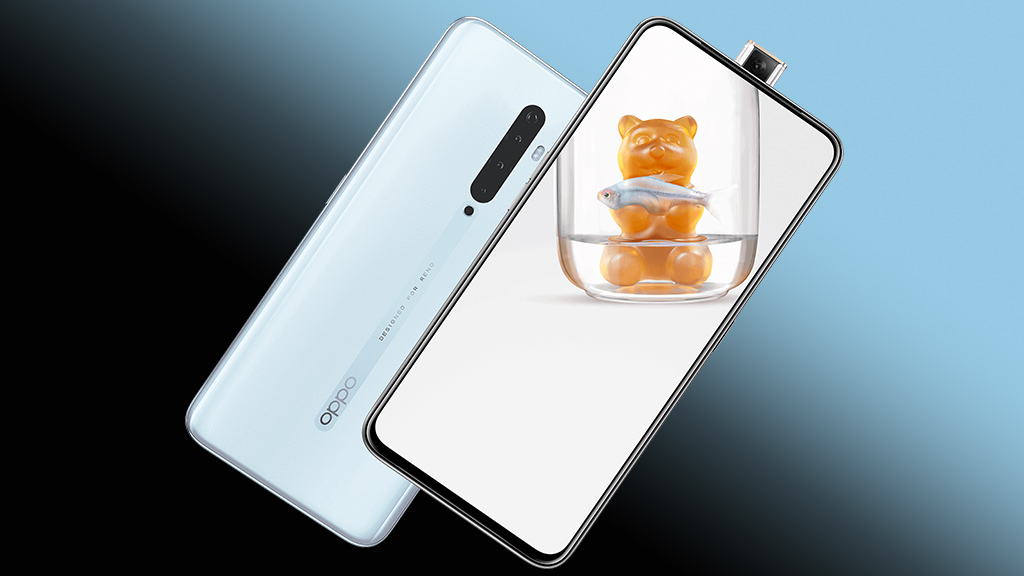
8. Oppo Reno 2 Z
Exceptional value from Oppo
Weight: 195g | Dimensions: 162.4 x 75.8 x 8.7mm | OS: Android 9.0 | Screen size: 6.53-inch | Resolution: 1080 x 2340 | CPU: Mediatek MT6779 Helio P90 | RAM: 8GB | Storage: 128GB (microSD up to 256GB) | Battery: 4,000mAh | Rear camera: 48MP + 8MP + 2MP + 2MP | Front camera: 16MP
You have to hand it to Oppo – even when it comes to its budget and mid-range offerings, the Chinese smartphone manufacturer always manages to deliver premium features and a gorgeous design.
Both things are immediately apparent in regards to the Oppo Reno 2 Z, a phone that offers a stunning all-screen design (no notches or cutouts here), an impressive quad camera on its rear and a sturdy aluminium build.
Thanks to the practically non-existent bezels on its aforementioned screen, the Reno 2 Z provides a totally uninterrupted 6.53-inch FHD+ AMOLED display to view media on – perfect for watching movies and scrolling through pictures you've taken.
Speaking of photography, the Reno 2 Z offers a terrific quad camera array on its rear with most of the heavy lifting done by a mighty 48MP main camera, with an 8MP ultra-wide lens and 2MP monochrome and depth sensors to round out the package.
That all-screen design we mentioned earlier? That's only possible due to the inclusion of a very nifty front-facing pop-up camera, which'll only show itself when you choose to take a selfie.
Unlike the Oppo Find X's implementation, which saw the camera pop up to scan your face every time you unlocked your phone, the Reno 2 Z uses an under-display fingerprint scanner for security – this should relieve a lot of the burden placed on the device's pop-up motor in the long run.
Admittedly, we'd have liked a more powerful chipset and GPU in the Oppo Reno 2 Z, but given its premium features and design, the phone is still terrific value for money.
See the best Oppo Reno 2 Z outright deals here
See the best Oppo Reno 2 Z plans here
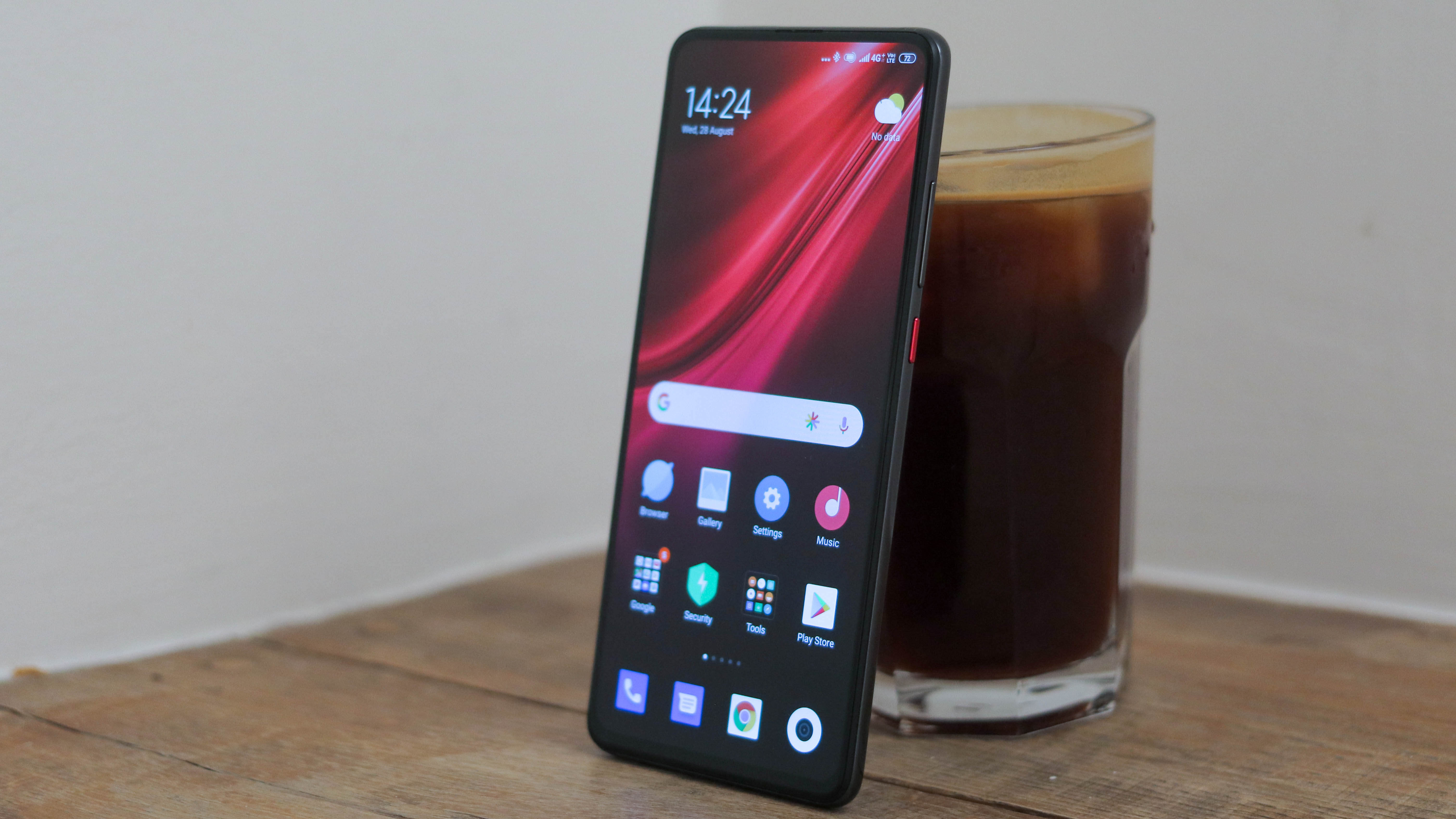
9. Xiaomi Mi 9T Pro
Flagship features at an unbelievable price
Weight: 191g | Dimensions: 156.7 x 74.3 x 8.8mm | OS: Android 9.0 | Screen size: 6.39-inch | Resolution: 1080 x 2340 | CPU: Snapdragon 855 octa-core | RAM: 6GB | Storage: 128GB | Battery: 4,000mAh | Rear camera: 48MP + 8MP +13MP | Front camera: 20MP
If you're after an impressive smartphone that offers flagship specs at a mid-range price, you can't go past the stunning Xiaomi Mi 9T Pro, which we recently awarded 4 and half stars in its review.
When it comes to design, display and power, the Mi 9T Pro has it all – and yes that does mean it has a headphone jack. Flagship features include a truly bezel-free 6.39-inch Super AMOLED display, which Xiaomi has achieved by employing a nifty 20MP pop-up selfie camera and an in-display fingerprint scanner. And there's a massive 4,000mAh battery to keep that display running for a long time.
Speaking of cameras, the Mi 9T Pro definitely delivers the goods in terms of photographic capability, sporting a triple-lens setup that boasts 48MP (main) + 8MP (telephoto) + 13MP (ultra-wide) sensors.
Best of all, it's powered by the latest Snapdragon 855 processor – the very same one that powers premium handsets like the Samsung Galaxy Note 10. Given that the Xiaomi Mi 9T Pro is less than half the price of Samsung's flagship, that's a remarkable achievement.
Of course, Xiaomi's Mi 9T Pro isn't entirely flawless – it's not waterproof, it's only got a mono speaker and its user interface won't be everyone's cup of tea, but if you're after a powerhouse device at a fraction of the price, you probably won't find a better option in Australia.
Read our Xiaomi Mi 9T Pro review
See the best Xiaomi Mi 9T Pro outright deals here
- Check out how these mid-range handsets compare to our overall top Aussie smartphone picks
from TechRadar - All the latest technology news https://ift.tt/3glewOe

0 coment�rios: